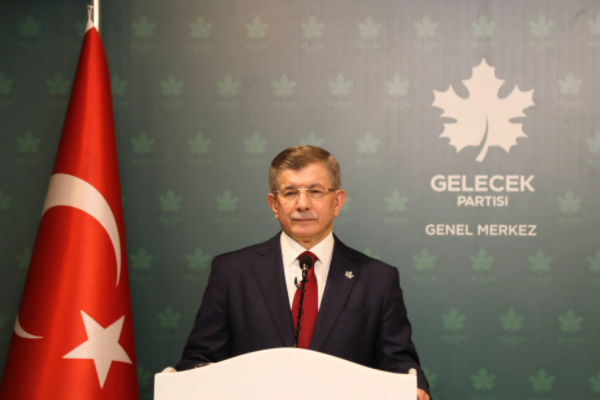Bond market status / Haberin Peşinde Urfa
Higher interest rates caused by the hawkish policy make it less convenient for a buyer to buy or borrow.
The effects of the hawkish Fed on rates. Higher interest rates caused by the hawkish policy make it less convenient for a buyer to buy or borrow. This deters consumers from making large purchases and thus leads to low demand for the goods. This, in turn, prevents commodity prices or inflation from rising.
US. Fed Chairman Powell, in his speech at the Jackson Hole symposium, said that reducing inflation would probably require a below-trend growth period, but that failure to achieve price stability would mean much more pain.
The Fed Chairman also said that an unusually large increase may be more appropriate at the next meeting, but that September’s decision will depend on the aggregate of incoming data and the improving outlook.
At some point, he added, as the monetary policy stance tightens further, it would be appropriate to slow the pace of growth. At its July 2022 meeting, the Fed raised the federal funds rate target range by 75 basis points to 2.25%-2.5%, the fourth consecutive rate hike, pushing borrowing costs to the highest level since 2019.

Federal funding rate. Source: Federal Reserve
Europe. ECB policy makers noted that the 50 basis point rate hike in July should be seen as necessary for the front-loading of the exit from negative rates and the normalization of monetary policy, rather than showing a change to the extent that would be expected as the end point of the normalization cycle.
At the same time, additional increases in borrowing costs will be made on a meeting basis and will depend on the data, but further increases will be appropriate at upcoming meetings. The minutes also showed unanimous support for the new Transmission Protection Tool.
Meanwhile, ECB policy makers felt that inflation risks had increased and noted that a decline in euro area economic activity could extend into 2023. In its July 2022 meeting, the ECB increased the 3 policy interest rates by 50 basis points, the first increase since 2011, in order to ease inflationary pressures and started the phase of exit from negative rates.

ECB policy rate. Source: European Central Bank
Expectations;
-US. Despite mounting recession fears, the Fed is expected to eventually raise interest rates and continue the march until it lowers interest rates next year. At this month’s meeting, a 75 basis point increase in interest rates (0.75 points) is foreseen. The average forecast then sees the Fed funds rate reach a peak of 3.8% in March 2023. It then appears to have dropped to 3.1% at the end of 2023 and to 2.9% at the end of 2024.
“I would expect the Fed to start paying more attention to rising recession risks (and) start slowing rate hikes from September,” said Thomas Costerg, senior US economist at Pictet Wealth Management. “I don’t think the Fed will be able to continue the march in December as employment is likely to experience a sharp decline and that would be a big red flag for them.”
“After raising interest rates aggressively, the Fed may need to take a break soon and allow moves that it has already made to cool off,” said Mark Vitner, chief executive officer and senior economist at Wells Fargo Corporate Investment Bank. “The hiring freeze is spreading through parts of the tech sector to the wider economy and will soon turn into a hard freeze and ultimately rising unemployment.”
-Europe. The median (and majority) expectation was that the ratio in Eurosystem’s main refinancing operations would increase steadily from 0.5% in 3Q22 to 1.3% in 1Q23. Interest rates are expected to remain at 1.5% on average (up from the previous estimate of 0.6%). In 2023 it reaches 1.8% (up from the previous forecast 1%). Regarding the 2023 average, almost 90% of responses reported values below 2% and about 10% of respondents reported values above 2.5%. Similarly, 80% of respondents expected interest rates to average below 2% and around 15% above 2.5% in 2024.
The expected average EUR/USD exchange rate has been revised downward on all horizons and is expected to remain around 1.06 in 2022 and then marginally increase at a steady pace to 1.12 through 2024.
Fed’s US treasury operations, Fed balance sheet shrinkage… Since the coronavirus (COVID-19) pandemic began, the Fed has dramatically increased its Treasury securities as part of a broader effort to counter the economic impact of the public health emergency. Currently, the Fed holds more Treasury bills and bonds than ever before. However, the Fed recently announced that it will begin shrinking its balance sheet to combat high inflation and a tight labor market.
As of June 8, 2022, the Fed had a total portfolio of $8.97 trillion, an increase of $4.25 trillion since March 18, 2020 (around the time most businesses closed). Longer-term Treasury bills and bonds (excluding inflation-indexed securities) account for two-thirds of this expansion, as these two types of securities more than doubled from $2.15 trillion on March 18, 2020 to $4.97 trillion on June 8, 2022.

The Fed’s Treasury securities portfolio has grown significantly. Source: Board of Governors of the Federal Reserve System, Factors Affecting Reserve Balances, June 2022
On June 1, 2022, the Fed began the process of shrinking its balance sheet to address rising inflation. According to a May press release, the Fed will initially limit its monthly purchases of Treasuries to $30 billion for June, July and August – the Fed purchased an average of $80 billion a month in Treasury bonds between March 2020 and March. 2022. The cap will rise to $60 billion in September and will likely remain at that level until the end of calendar year 2023.
The Fed will also reduce its mortgage-backed securities in the coming months, with the cap initially set to $17.5 billion a month and rising to $35 billion a month three months later.

Current treasury bill/bond yields. Source: CNBC, Bloomberg
Conclusion? Fed Vice Chairman Lael Brainard said on Wednesday that interest rates need to stay there for a while longer to rise further and provide confidence that inflation is falling towards the central bank’s 2% target. The Fed’s efforts to cool inflation by raising interest rates will likely lead to a recession, according to respondents to the CNBC Fed Survey. While some remain hopeful of a soft landing, the majority think the economy will begin to contract later this year.
The ECB is expected to raise rates for a second time in September, with most analysts pointing to a 75bps rate hike, but a 50bps increase is also a possibility as the central bank struggles with high inflation and an impending recession. In the ECB Professional Forecasters Survey (SPF) for 3Q22, HICP inflation expectations were revised upwards on all horizons to reach 7.3%, 3.6% and 2.1% for 2022, 2023 and 2024, respectively.
Kaynak:Tera Yatırım-Enver Erkan
Hibya Haber Ajansı











